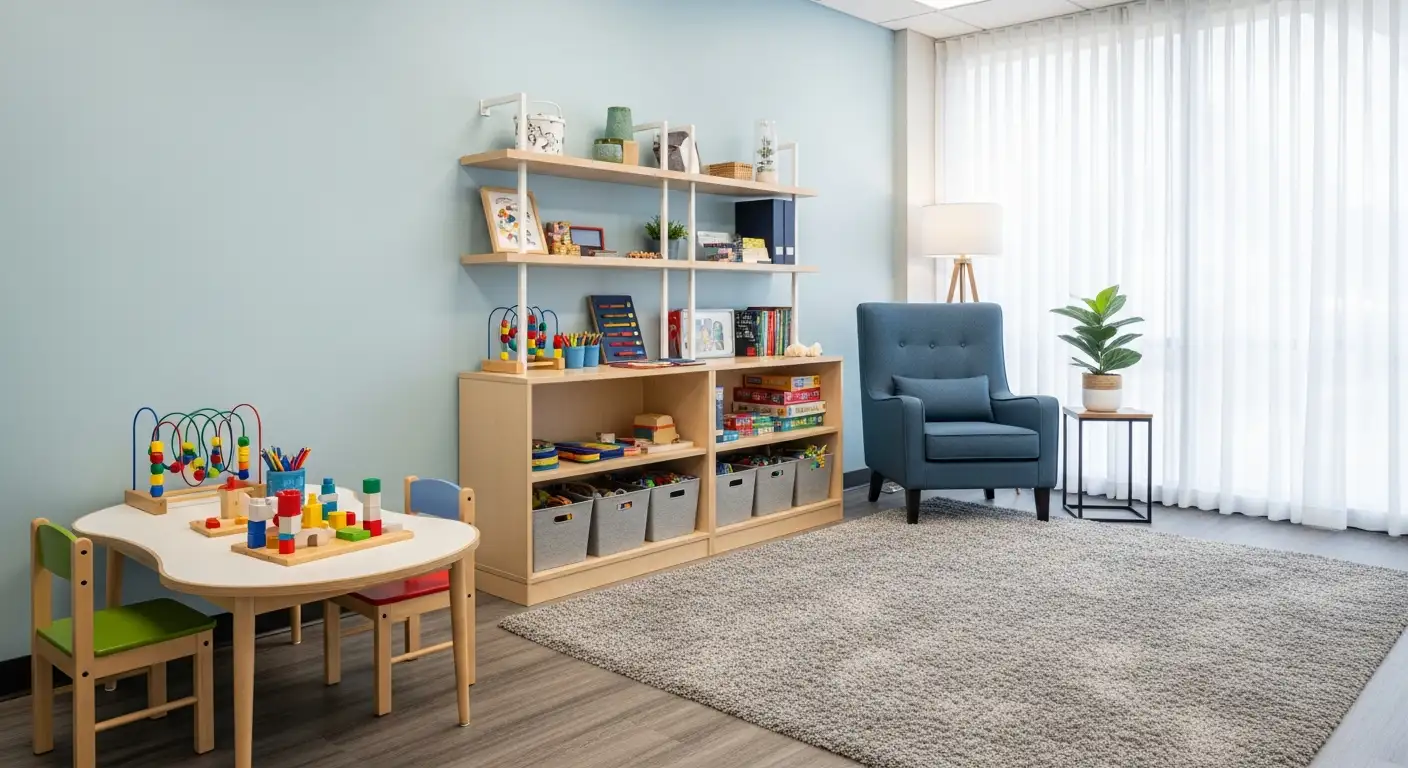Understanding ABA Therapy and Its Impact on Social Skills
Applied Behavior Analysis (ABA) therapy stands as a scientifically validated intervention designed to support children with autism in developing vital social and communication skills. By using structured and personalized approaches, ABA therapy helps children improve interactions and reduce challenging behaviors, setting the foundation for stronger relationships and increased independence.
Foundations of ABA Therapy: Principles and Practice

What is Applied Behavior Analysis (ABA) therapy and how does it work for individuals with autism?
Applied Behavior Analysis (ABA) therapy is a scientifically supported approach designed to help children with autism develop important skills and reduce challenging behaviors. It is grounded in the science of learning and behavior analysis, using individualized programs tailored by professionals like Board Certified Behavior Analysts (BCBAs) and Registered Behavior Technicians (RBTs).
How ABA therapy works
ABA therapy works by breaking down complex skills into small, manageable steps. Through structured and play-based sessions, children repeatedly practice these skills while receiving positive reinforcement, which encourages desired behaviors and helps generalize the skills across different situations. The therapy targets areas such as communication, social interaction, daily living skills, and academic abilities.
Key techniques used in therapy
Some common ABA techniques include:
- Modeling: Demonstrating desired behaviors for the child to imitate.
- Role playing: Practicing social scenarios in a supportive setting.
- Natural environment training: Teaching skills within everyday routines and settings. These methods help children learn social cues, language skills, and appropriate responses.
Role of positive reinforcement and behavior analysis
Positive reinforcement is essential in ABA, as it strengthens helpful behaviors by providing rewards or praise immediately after the behavior occurs. Behavior analysis helps therapists understand the antecedents (what happens before) and consequences (what happens after) of behaviors, allowing treatment plans to focus on increasing beneficial behaviors and decreasing harmful ones.
ABA therapy is widely recognized by leading organizations such as the US Surgeon General and the American Psychological Association for its evidence-based effectiveness in supporting children with autism to thrive socially, communicatively, and academically.
Goals and Benefits of ABA Therapy for Social Skill Development

What Are the Common Goals and Benefits of Behavioral Therapy for Autism?
ABA therapy has several core objectives focused on improving the lives of children with autism. The primary goals include enhancing communication abilities, developing social interaction skills, boosting daily living competencies, and reducing behaviors that might hinder learning or social engagement such as aggression or frustration.
How Does ABA Therapy Improve Communication and Social Interaction?
ABA therapy employs techniques like modeling, role-playing, and natural environment training to teach vital social skills. These methods help children learn to start conversations, interpret social cues, practice active listening, and share with others. Through positive reinforcement, children are encouraged to generalize these skills across different settings, which builds confidence and leads to better social connections.
How Does ABA Therapy Reduce Problematic Behaviors?
ABA uses understanding of antecedents and consequences to break down behaviors and systematically encourage positive actions. By focusing on positive reinforcement, it helps decrease behaviors that interfere with success or socialization, such as aggression or frustration. This approach promotes more adaptive, helpful behaviors that support learning and interaction.
In What Ways Does ABA Therapy Support Daily Living Skills and Social Confidence?
Targeted ABA programs are tailored to each child's unique needs, incorporating structured sessions led by trained professionals. This individualized approach helps improve everyday skills needed for independence, such as self-care routines and managing emotions. Social skills training within ABA also nurtures emotional recognition, friendship development, and conflict resolution, all of which build social confidence and enable children with autism to better navigate social environments.
| Goal Area | ABA Strategy Used | Benefits Achieved |
|---|---|---|
| Communication | Role-playing, modeling, language practice | Improved expressive and receptive language skills |
| Social Interaction | Natural environment training, social skills practice | Enhanced social understanding, increased peer engagement |
| Problematic Behaviors | Positive reinforcement, behavior analysis | Reduction in aggression, frustration, and maladaptive behaviors |
| Daily Living Skills | Structured sessions, individualized goals | Greater independence, improved emotional management |
| Social Confidence | Social skills therapy, conflict resolution | Better relationships, higher self-esteem, effective social navigation |
Techniques and Strategies in ABA for Enhancing Social Skills

How Does ABA Use Modeling, Role Playing, and Natural Environment Training?
ABA therapy employs several interactive techniques to improve social skills in children with autism. Modeling involves demonstrating appropriate social behaviors for the child to observe and imitate. Role playing allows children to practice conversational skills and social interactions in a safe, structured setting. Natural environment training takes learning beyond the therapy room, encouraging the child to use social skills during everyday activities and real-life situations.
What Social Skills Does ABA Therapy Target?
ABA therapy focuses on essential social skills, including starting and maintaining conversations, interpreting social cues, active listening, sharing, and greeting others. These skills help children engage confidently in various social settings and build meaningful relationships.
How Are Visual Aids and Structured Play Incorporated?
Visual aids such as pictures, charts, and social stories support comprehension and reinforce learning. Structured play activities create opportunities for practicing social interactions through guided scenarios, enhancing engagement and skill acquisition.
Why Are Social Skills Broken Down Into Manageable Steps?
ABA breaks complex social behaviors into smaller, teachable steps. This stepwise approach allows for systematic teaching and repeated practice, which is tailored to each child's unique needs. Reinforcement is used consistently to encourage progress and generalization of skills across different environments.
These strategies collectively provide a comprehensive framework enabling children with autism to build social competence and thrive in social settings.
Professional Providers and the Individualized Nature of ABA Programs

Who typically provides ABA therapy and behavioral interventions for autism?
ABA therapy is delivered by a team of trained professionals including Board Certified Behavior Analysts (BCBAs), certified behavior analysts, and therapists. BCBAs oversee and design individualized treatment plans based on scientific principles of learning and behavior analysis. Registered Behavior Technicians (RBTs) and other trained therapists implement the daily therapy activities, ensuring consistency and accuracy in applying ABA techniques.
Roles of BCBAs, therapists, and behavior technicians
BCBAs assess each child's unique needs, set therapy goals, and monitor progress. Therapists and behavior technicians carry out the structured sessions using evidence-based interventions such as positive reinforcement, role-playing, and natural environment training. This collaboration ensures that the therapy is both effective and tailored to the child's development.
Individualized treatment plans
ABA programs are customized with specific goals for communication, social skills, and behavioral improvements. The therapy involves breaking down complex behaviors into small steps, allowing for personalized teaching and gradual skill-building through repeated practice.
Importance of qualifications and multidisciplinary teams
Qualified providers with certifications like BCBA and RBT ensure fidelity to ABA's scientifically validated methods. These teams often work with families, educators, and medical professionals to create comprehensive supports that address the child's developmental needs across settings. This multidisciplinary approach maximizes the effectiveness of ABA therapy in promoting social interaction, communication, and daily living skills in children with autism.
Measuring Progress and Long-term Outcomes in ABA Therapy

How is the progress of individuals undergoing autism behavioral therapy measured and tracked?
Tracking progress in ABA therapy involves systematic data collection, using methods such as recording the frequency of behaviors, duration, latency, and percentages of correct responses. Therapists gather this data through structured observations and tools like ABC (Antecedent-Behavior-Consequence) charts and standardized assessments. This ongoing data collection creates a clear picture of a child’s baseline abilities, enabling setting specific and measurable goals tailored to individual needs.
Use of data collection and assessments
Data collection plays a vital role in determining the effectiveness of the therapy. By analyzing trends over time, therapists can identify areas of improvement or behaviors that require further intervention. Regular assessments, both formal and informal, help ensure the goals remain relevant and achievable. Visual supports and technology applications also assist in accurate, consistent monitoring, providing real-time updates on skill acquisition and behavior modification.
Collaborative involvement of families
Families are integral to tracking progress. Therapists actively share progress reports and provide guidance for parents and caregivers to reinforce learning outside therapy sessions. This collaboration helps generalize skills across different environments, ensuring that improvements in social communication and daily living extend beyond clinical settings.
Evidence of long-term improvements in social communication and daily functioning
Long-term studies show that intensive ABA therapy, sustained over one to three years with 25-40 hours per week, contributes to meaningful improvements. These include enhanced social communication skills, better daily living abilities, and reduced problematic behaviors, leading to increased independence and improved quality of life for children with autism.
Empowering Social Connections Through ABA Therapy
ABA therapy continues to establish itself as a leading, evidence-based approach to fostering essential social skills in children with autism. Through individualized strategies, dedicated professionals, and data-driven progress tracking, ABA helps children develop communication abilities, navigate social interactions, and build meaningful relationships. Early and consistent intervention maximizes these benefits, improving quality of life and laying the groundwork for greater independence. As our understanding and methods evolve, ABA therapy remains central to supporting children on the autism spectrum toward fuller social engagement and personal growth.






